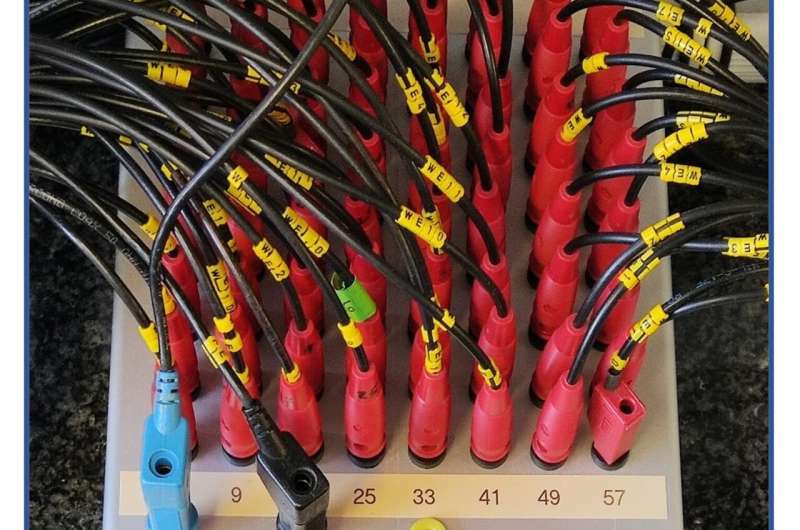This article has been reviewed according to Science X's editorial process and policies. Editors have highlighted the following attributes while ensuring the content's credibility:
fact-checked
peer-reviewed publication
trusted source
proofread
Research team develops biosensor that could lead to quick and inexpensive test for osteoporosis risk

As life expectancy increases worldwide, age-associated diseases such as osteoporosis are having an increasing impact.
Although early detection could help physicians intervene as soon as possible—when treatment might offer the greatest benefit—this type of detection is not yet possible with current osteoporosis diagnostic tests. Now, researchers reporting in ACS Central Science have developed a biosensor that could someday help identify those most at risk for osteoporosis using less than a drop of blood.
Early intervention is critical to reducing the morbidity and mortality associated with osteoporosis, a condition characterized by an elevated risk of bone fractures and which affects about 54 million people in the U.S., according to the International Osteoporosis Foundation. The most common technique used to measure changes in bone mineral density (BMD)—dual-energy X-ray absorptiometry—is not sufficiently sensitive to detect BMD loss until a significant amount of damage has already occurred.
Several genomic studies, however, have reported genetic variations known as single nucleotide polymorphisms (SNPs) that are associated with increased risk for osteoporosis. Using this information, Ciara K. O'Sullivan and colleagues wanted to develop a portable electrochemical device that would allow them to quickly detect five of these SNPs in finger-prick blood samples in a step toward early diagnosis.
The device involves an electrode array to which DNA fragments for each SNP are attached. When lysed whole blood is applied to the array, any DNA matching the SNPs binds the sequences and is amplified with recombinase polymerase that incorporates ferrocene, a label that facilitates electrochemical detection. Using this platform, the researchers detected osteoporosis-associated SNPs in 15 human blood samples, confirming their results with other methods.
As the DNA does not have to be purified from the blood, the analysis can be performed quickly (about 15 minutes) and inexpensively (less than $0.5 per SNP). Furthermore, because the equipment and reagents are readily accessible and portable, the researchers say that the device offers great potential for use at point-of-care settings, rather than being limited to a centralized laboratory.
The technology is also versatile and can be readily adapted to detect other SNPs, as the researchers showed previously when identifying drug resistance in Tuberculosis mycobacterium from sputum and cardiomyopathy risk from blood. Although the device does not diagnose osteoporosis itself, it might help physicians identify people whom they should monitor more closely.
More information: Mayreli Ortiz et al, Generic Platform for the Multiplexed Targeted Electrochemical Detection of Osteoporosis-Associated Single Nucleotide Polymorphisms Using Recombinase Polymerase Solid-Phase Primer Elongation and Ferrocene-Modified Nucleoside Triphosphates, ACS Central Science (2023). DOI: 10.1021/acscentsci.3c00243
Journal information: ACS Central Science
Provided by American Chemical Society




















